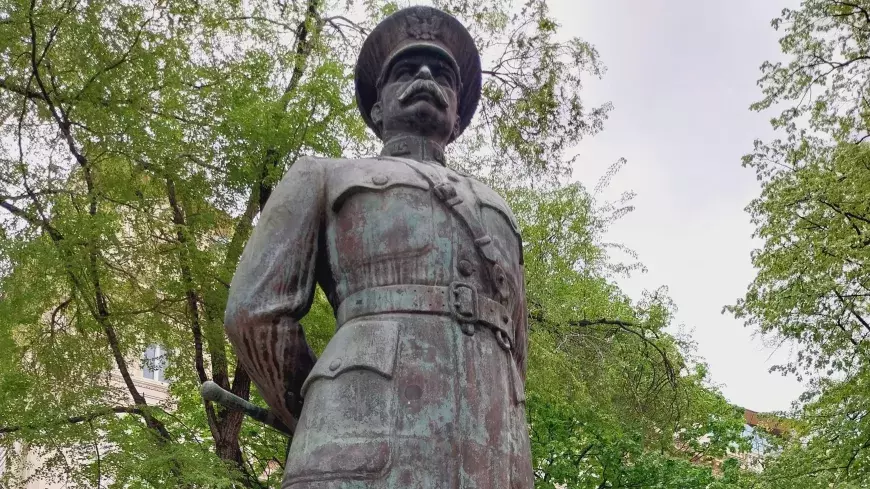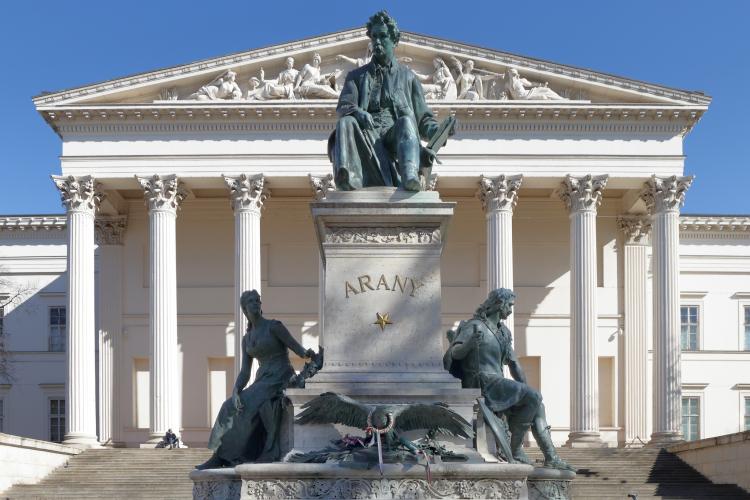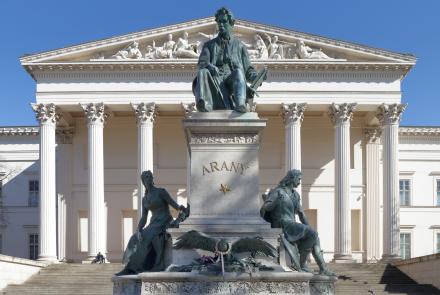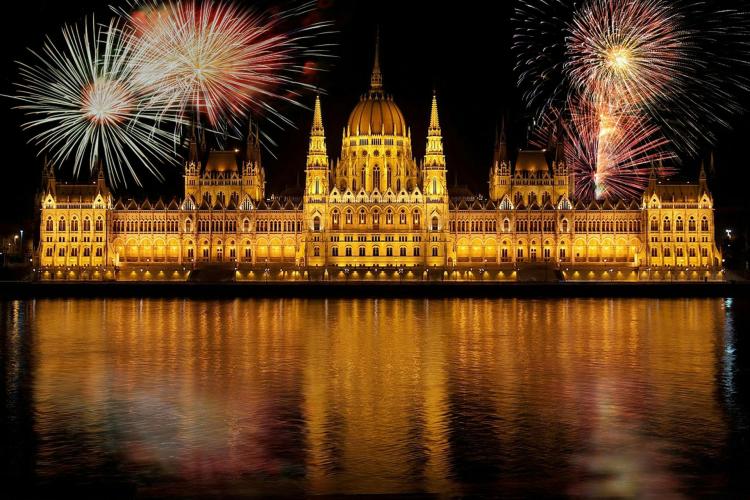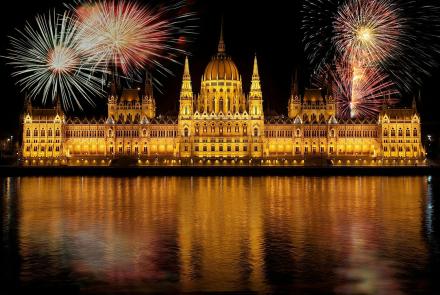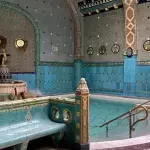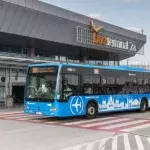Liberty Square and the US General Who Saved Budapest’s Treasures
If you wander into Budapest’s leafy Liberty Square (Szabadság tér), you might want to check out a bronze statue of an American general standing across from the U.S. Embassy. Who is this man, and why is he honored in Hungary? It turns out he’s General Harry Hill Bandholtz, a U.S. Army officer who played a surprising role in Hungarian history. Bandholtz was a career U.S. Army officer and major general in World War I. In 1919 he arrived in Budapest as America’s representative on the Allied Military Mission, helping supervise the withdrawal of occupying forces.
In the aftermath of the war the old Hungarian Kingdom fell into chaos. One afternoon in October 1919, Bandholtz heard that Romanian troops were loading dozens of trucks with artifacts from the Hungarian National Museum. The soldiers claimed they were “taking Transylvanian treasures home,” but Bandholtz wasn’t buying it. He marched over to the museum and calmly confronted the raiders. According to reports, he stood down the soldiers with nothing but his leather riding crop in hand. This quick action forced them to unload their trucks, and he ordered the museum’s doors sealed under Allied authority. Signs were posted on the entrance saying “Sealed by Order – Inter-Allied Military Commission. H.H. Bandholtz, President of the Day, October 5th, 1919.” Thanks to his decisive move, Hungary’s priceless artworks and artifacts stayed home. The very riding crop Bandholtz used that day is preserved in the Hungarian National Museum as a relic of this.
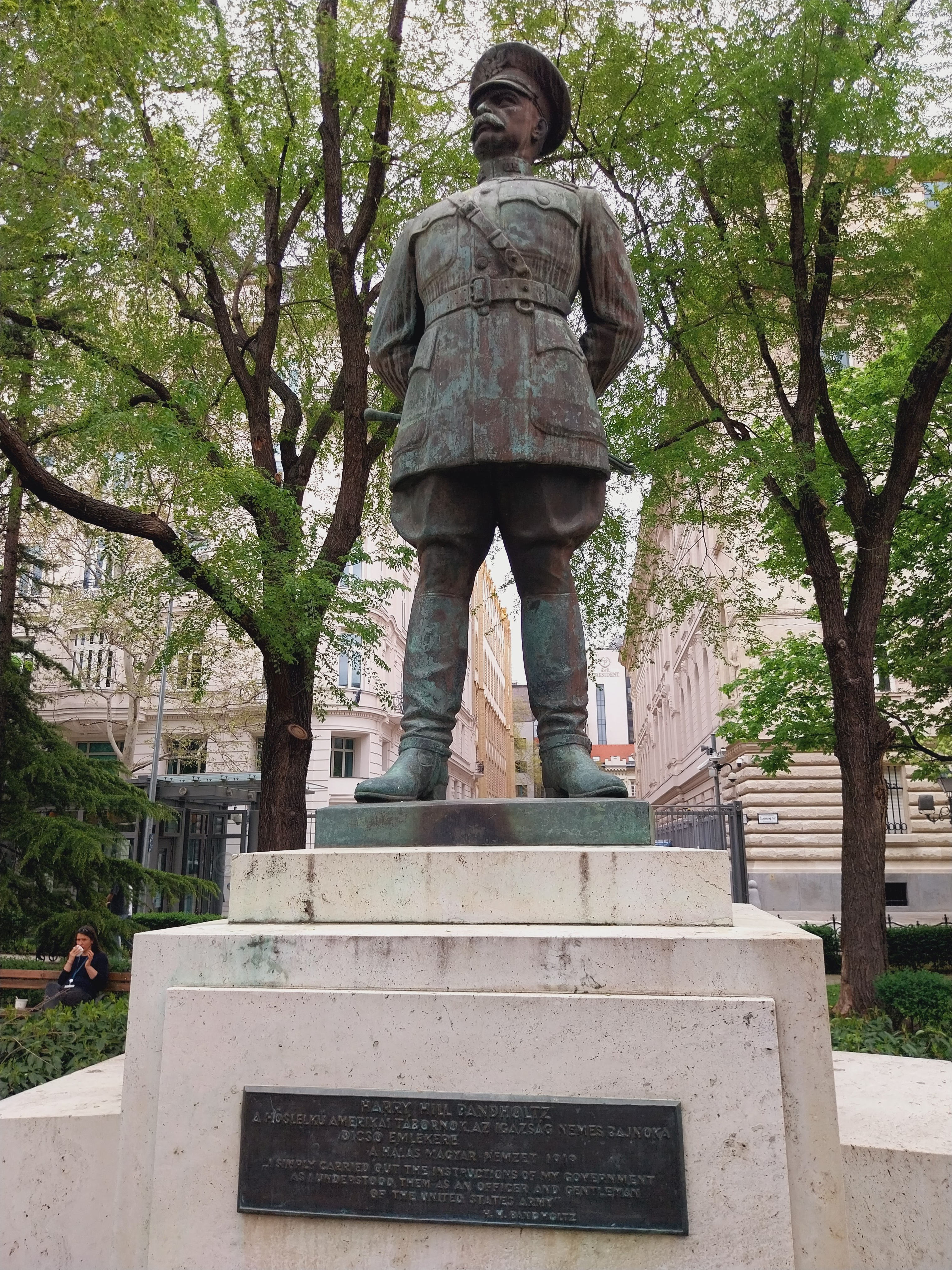
The statue and plaque of General Harry Hill Bandholtz
In gratitude, the Hungarian government erected a statue of Bandholtz in 1936 even though the U.S. had been on the opposing side of World War I. This full-size bronze figure was sculpted by Miklós Ligeti. The General is shown in World War I-era dress with a stern, proud stance, his trademark riding crop tucked under one arm – a subtle nod to how he famously used it to stop the looters. On the pedestal is a plaque quoting Bandholtz himself:
“I simply carried out the instructions of my government as I understood them as an officer and a gentleman of the United States Army.”
After World War II the statue even survived the Communist era, only to be hidden away by the new regime in 1949. It sat in a storage yard for decades until Hungary’s political changes in the 1980s. In 1985 it was moved to the US abassador's residence. In 1989 – coinciding with President George H. W. Bush’s visit to Budapest – Bandholtz’s statue was returned to its original spot in Liberty Square.
Liberty Square and the statue make a great and free stop on a Budapest walking tour. Here are a few tips: The square is in central Pest, a short walk north of the Parliament and along the river. The U.S. Embassy and the grand Hungarian National Bank building sit on its East side.
The square is a peaceful, well-kept plaza with lawns, shady trees and fountains. There are benches if you want to sit a while. It’s a nice spot to relax after a busy sightseeing day. The park is accessable by by metro – Arany János utca (blue M3 line) or Kossuth Lajos tér (red M2 line) – or by tram and bus.
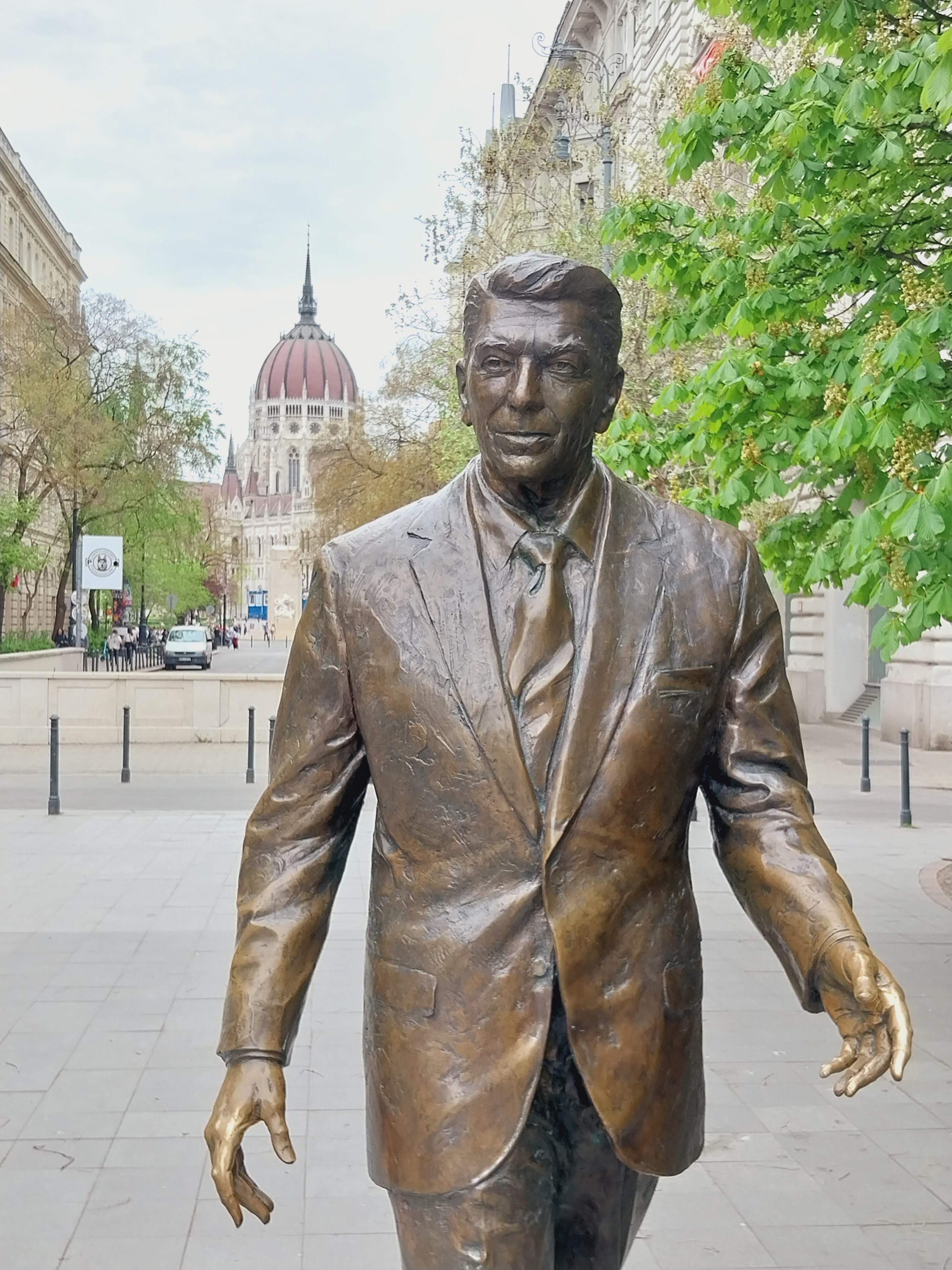
President Reagen with the Parliament building in the background
While at Liberty Square, you can also see the striking memorial to Soviet soldiers (a large bronze Red Army monument) and statue of Ronald Reagan. Hungarians erected the larger than life statue of the 40th US president to honor his efforts to end the Cold War. His statue was unveiled in 2011.
Another American president with a statue on the statue is George H.W. Bush. The 41st US president he gained recognition for helping to end the Cold War and aiding democracies in central and eastern Europe. His monument was inaugurated in 2020.
So if you’re an American visiting Budapest, don’t miss Liberty Square. It’s a rare chance to see a slice of American history proudly honored abroad — and a powerful reminder of the friendships forged across time and continents.
